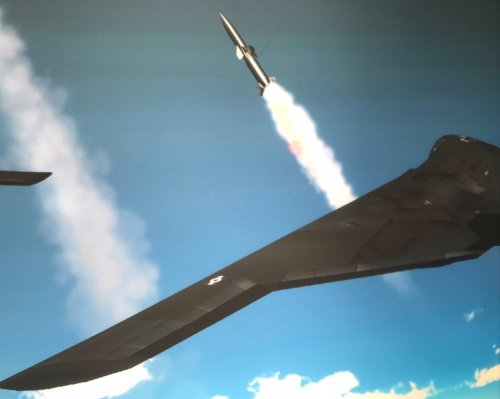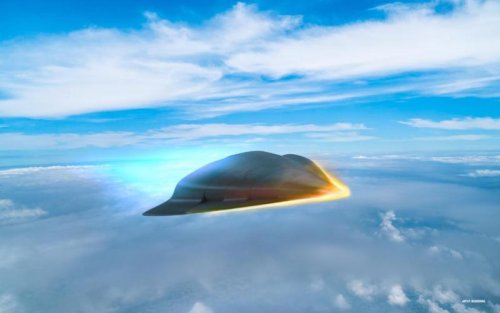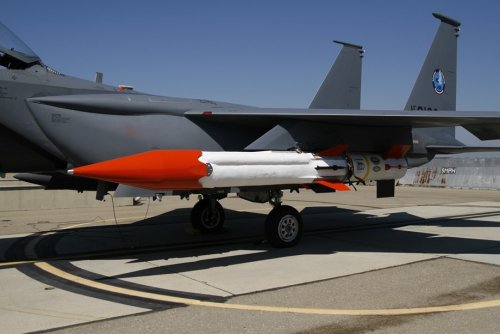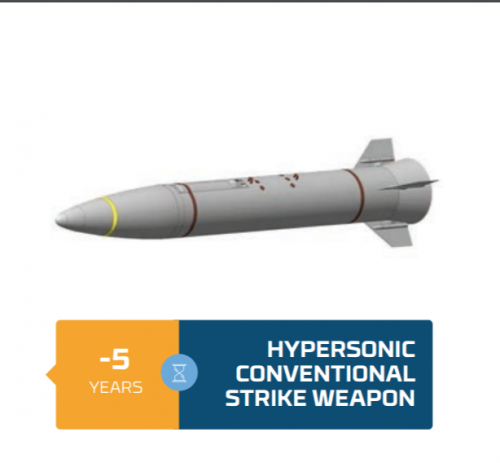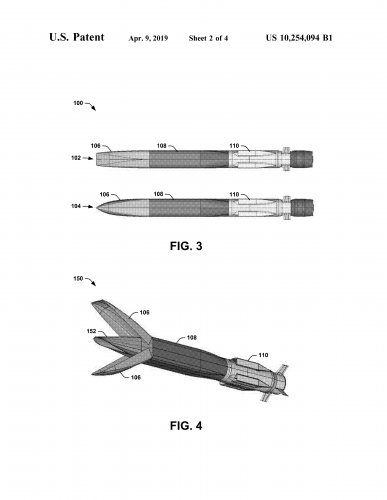You are using an out of date browser. It may not display this or other websites correctly.
You should upgrade or use an alternative browser.
You should upgrade or use an alternative browser.
Current US hypersonic weapons projects. (General)
- Thread starter Hanse
- Start date
- Joined
- 9 October 2009
- Messages
- 21,928
- Reaction score
- 13,554
Preaching to the choir, brother.
- Joined
- 21 April 2009
- Messages
- 13,732
- Reaction score
- 7,617
http://www.airforcemag.com/Features/Pages/2019/February%202019/Roper-Hypersonics-Capability-Less-Than-Two-Years-Away.aspx?fbclid=IwAR1SvzIYxN4C0X6XuM9ZD3SK_lkDiUlbYVXCDym0g7XnRFm8JYc8iHLquc0
The Air Force is slated to have an operational capability with the Hypersonic Conventional Strike Weapon by late 2020, and with a separate and more advanced capability six months after that, according to service acquisition chief Will Roper.
Speaking with reporters at the Pentagon on Feb. 6, Roper said he’s “very happy with where we are on hypersonics,” and said the HCSW will make its first flight “by the end of next year” and achieve “EOC”—or Early Operational Capability—a year after that. HCSW is based on technologies developed for the “conventional prompt strike program,” he said, and “that’s flown successfully.” He called it a “lower-risk design.”
Lockheed Martin got a $928 million contract for HCSW last June, and in August nabbed a contract worth up to $480 million for the Air-launched Rapid Response Weapon, or ARRW, design work.
- Joined
- 21 April 2009
- Messages
- 13,732
- Reaction score
- 7,617
From Inside Defense
DOD seeks new satellite network for long-range, hypersonic strike targeting
The Pentagon is asking industry for ideas on a new satellite constellation optimized to identify fleeting, high-priority targets for attack by conventionally armed hypersonic glide vehicles, a solicitation that marks a development in the U.S. military's effort to field a new class of ultra-fast weapons and advances the Trump administration's goal to develop a "left of launch" missile defense capability.
DOD seeks new satellite network for long-range, hypersonic strike targeting
The Pentagon is asking industry for ideas on a new satellite constellation optimized to identify fleeting, high-priority targets for attack by conventionally armed hypersonic glide vehicles, a solicitation that marks a development in the U.S. military's effort to field a new class of ultra-fast weapons and advances the Trump administration's goal to develop a "left of launch" missile defense capability.
- Joined
- 9 October 2009
- Messages
- 21,928
- Reaction score
- 13,554
Tom Clancy's Gapsfree system in other words?
EDIT: DARPA's Blackjack program is likely related to this.
EDIT: DARPA's Blackjack program is likely related to this.
bring_it_on
I really should change my personal text
- Joined
- 4 July 2013
- Messages
- 3,640
- Reaction score
- 3,758
marauder2048
"I should really just relax"
- Joined
- 19 November 2013
- Messages
- 3,157
- Reaction score
- 926
marauder2048
"I should really just relax"
- Joined
- 19 November 2013
- Messages
- 3,157
- Reaction score
- 926
edwest said:The V-2 rocket was hypersonic. What about the old MAneuverable Reentry Vehicles? For the US, this sort of thing goes back to the 1950s.
http://www.astronautix.com/b/brassbell.html
AFAIK, the only thing the US deployed was MaRVs all of which had a predominantly ballistic trajectory.
- Joined
- 3 June 2011
- Messages
- 18,308
- Reaction score
- 12,141
Raytheon Wins $63.3 Million DARPA Contract for Hypersonic Weapons Work
"TUCSON, Ariz. --- Raytheon Company won a $63.3 million DARPA contract to further develop the Tactical Boost Glide hypersonic weapons program. The joint DARPA and U.S. Air Force effort includes a critical design review, a key step in fielding the technology. "
http://www.defense-aerospace.com/articles-view/release/3/200564/raytheon-wins-%2463m-darpa-contract-for-hypersonic-weapons-work.html
"TUCSON, Ariz. --- Raytheon Company won a $63.3 million DARPA contract to further develop the Tactical Boost Glide hypersonic weapons program. The joint DARPA and U.S. Air Force effort includes a critical design review, a key step in fielding the technology. "
http://www.defense-aerospace.com/articles-view/release/3/200564/raytheon-wins-%2463m-darpa-contract-for-hypersonic-weapons-work.html
Attachments
antigravite
ACCESS: Top Secret
- Joined
- 25 April 2008
- Messages
- 836
- Reaction score
- 258
marauder2048 said:edwest said:The V-2 rocket was hypersonic. What about the old MAneuverable Reentry Vehicles? For the US, this sort of thing goes back to the 1950s.
http://www.astronautix.com/b/brassbell.html
AFAIK, the only thing the US deployed was MaRVs all of which had a predominantly ballistic trajectory.
hmmm... hmmm… How about the "HAVE NOT" program? Late '80s or early '90s. (And somehow associated with Martin Marietta if my memory's correct… but this needs to be verified.)
A.
- Joined
- 3 June 2011
- Messages
- 18,308
- Reaction score
- 12,141
antigravite said:marauder2048 said:edwest said:The V-2 rocket was hypersonic. What about the old MAneuverable Reentry Vehicles? For the US, this sort of thing goes back to the 1950s.
http://www.astronautix.com/b/brassbell.html
AFAIK, the only thing the US deployed was MaRVs all of which had a predominantly ballistic trajectory.
hmmm... hmmm… How about the "HAVE NOT" program? Late '80s or early '90s. (And somehow associated with Martin Marietta if my memory's correct… but this needs to be verified.)
A.
IIRC there were no MaRVs ever deployed by the US aside from the Pershing II RV.
marauder2048
"I should really just relax"
- Joined
- 19 November 2013
- Messages
- 3,157
- Reaction score
- 926
I hadn't actually seen these images of (what is purportedly) AMARV before...
https://catalog.archives.gov/id/6343119
https://catalog.archives.gov/id/6343119
Attachments
bring_it_on
I really should change my personal text
- Joined
- 4 July 2013
- Messages
- 3,640
- Reaction score
- 3,758
DOD pulls Raytheon back into competition against Lockheed for tactical hypersonic weapon
On Feb. 25, the Defense Advanced Research Projects Agency awarded Raytheon Missile Systems a $63.3 million contract for a second phase of the Tactical Boost Glide program, a follow-on award to work that concluded a couple years ago after Raytheon delivered a hypersonic design that cleared preliminary design review and has until now sat on the shelf."We believe the reason DARPA came back to us at the two-year point was that we have a very unique design, both the technical solution as well as the systems solution," Thomas Bussing, Raytheon Advanced Missile Systems vice president, told Inside Defense in a March 5 interview.....
Raytheon, according to Bussing, has invested about $100 million in developing hypersonic technologies in the last "six years or so" to support new rocket boosters to carry glide vehicles to near-space altitudes, on glide bodies that can skip and maneuver at the edge of the atmosphere, as well as on air-breathing technologies to support a separate class of ultra-fast missiles.
"There is a fairly large activity at Raytheon in this business space," he said. "We have several classified programs, several significant classified programs."
Asked about the perception that Lockheed Martin -- which has nabbed contracts for Air Force and Navy programs to develop an integrated weapon that pairs the common hypersonic glide body developed as part of the Convention Prompt Strike program with a new high-speed rocket -- has a solid, inside track in supplying DOD new hypersonic weapons, Bussing offered this: "Its not always what you see in the open press; there are several classified programs at play that we're fairly involved in."
- Joined
- 3 June 2011
- Messages
- 18,308
- Reaction score
- 12,141
Interesting quote regarding the F-15X.
"Lastly, the F-15EX is seen as a reliable launch pad for new, larger weapons, in particular hypersonic missiles that will not fit inside the F-35A's internal weapons bay, the source notes.
"We've got to carry a [7,000lb] to 8,000lb weapon that is enormous and doesn't fit in an internal bay," says the source. "And we need a very reliable platform that we well understand, that has power, space and cooling, and we can adapt quickly over the next 10, 12 or 15 years."
The USAF says hypersonic weapons are still in early stages of development, and that it is too early to know which platforms will be able to carry them. "
"Lastly, the F-15EX is seen as a reliable launch pad for new, larger weapons, in particular hypersonic missiles that will not fit inside the F-35A's internal weapons bay, the source notes.
"We've got to carry a [7,000lb] to 8,000lb weapon that is enormous and doesn't fit in an internal bay," says the source. "And we need a very reliable platform that we well understand, that has power, space and cooling, and we can adapt quickly over the next 10, 12 or 15 years."
The USAF says hypersonic weapons are still in early stages of development, and that it is too early to know which platforms will be able to carry them. "
bring_it_on
I really should change my personal text
- Joined
- 4 July 2013
- Messages
- 3,640
- Reaction score
- 3,758
https://www.youtube.com/watch?v=GofqMO0caHc
- Joined
- 11 February 2010
- Messages
- 1,643
- Reaction score
- 2,682
sferrin said:Interesting quote regarding the F-15X.
"Lastly, the F-15EX is seen as a reliable launch pad for new, larger weapons, in particular hypersonic missiles that will not fit inside the F-35A's internal weapons bay, the source notes.
"We've got to carry a [7,000lb] to 8,000lb weapon that is enormous and doesn't fit in an internal bay," says the source. "And we need a very reliable platform that we well understand, that has power, space and cooling, and we can adapt quickly over the next 10, 12 or 15 years."
The USAF says hypersonic weapons are still in early stages of development, and that it is too early to know which platforms will be able to carry them. "
I'm curious on how much of that weight devoted to the rocket booster.
- Joined
- 31 December 2006
- Messages
- 802
- Reaction score
- 363
stealthflanker said:sferrin said:Interesting quote regarding the F-15X.
"Lastly, the F-15EX is seen as a reliable launch pad for new, larger weapons, in particular hypersonic missiles that will not fit inside the F-35A's internal weapons bay, the source notes.
"We've got to carry a [7,000lb] to 8,000lb weapon that is enormous and doesn't fit in an internal bay," says the source. "And we need a very reliable platform that we well understand, that has power, space and cooling, and we can adapt quickly over the next 10, 12 or 15 years."
The USAF says hypersonic weapons are still in early stages of development, and that it is too early to know which platforms will be able to carry them. "
I'm curious on how much of that weight devoted to the rocket booster.
That’s a big payload. Skybolt was 11,000 lbs. so that’s going to be a pretty big missile. I assume the B-52 would be a candidate platform as well.
- Joined
- 3 June 2011
- Messages
- 18,308
- Reaction score
- 12,141
George Allegrezza said:stealthflanker said:sferrin said:Interesting quote regarding the F-15X.
"Lastly, the F-15EX is seen as a reliable launch pad for new, larger weapons, in particular hypersonic missiles that will not fit inside the F-35A's internal weapons bay, the source notes.
"We've got to carry a [7,000lb] to 8,000lb weapon that is enormous and doesn't fit in an internal bay," says the source. "And we need a very reliable platform that we well understand, that has power, space and cooling, and we can adapt quickly over the next 10, 12 or 15 years."
The USAF says hypersonic weapons are still in early stages of development, and that it is too early to know which platforms will be able to carry them. "
I'm curious on how much of that weight devoted to the rocket booster.
That’s a big payload. Skybolt was 11,000 lbs. so that’s going to be a pretty big missile. I assume the B-52 would be a candidate platform as well.
Skybolt was packing a 1.2Mt nuclear warhead in a separating RV. Something with a smaller warhead won't need to be that big.
Attachments
- Joined
- 31 December 2006
- Messages
- 802
- Reaction score
- 363
sferrin said:Skybolt was packing a 1.2Mt nuclear warhead in a separating RV. Something with a smaller warhead won't need to be that big.
Well yes, I was just mentioning Skybolt as a point of comparison. I don’t think there’s an air-launched missile that’s anywhere near 8000 lbs. in the inventory nor has there been since Skybolt. A possible exception was the Vought ASAT tested in the 1980s but I don’t remember it’s exact launch weight.
- Joined
- 3 June 2011
- Messages
- 18,308
- Reaction score
- 12,141
George Allegrezza said:sferrin said:Skybolt was packing a 1.2Mt nuclear warhead in a separating RV. Something with a smaller warhead won't need to be that big.
Well yes, I was just mentioning Skybolt as a point of comparison. I don’t think there’s an air-launched missile that’s anywhere near 8000 lbs. in the inventory nor has there been since Skybolt.
You're right. That doesn't mean it will stay that way. For decades there wasn't a 4000lb+ bomb in the inventory. Until there was one. There were no giant bombs in the inventory from the time the T-12 was retired in 1958 until MOAB and MOP were developed. And you're only talking about the US. Russia has had many air-launched missiles near or over 8,000lbs., the latest being Kinzhal.
bring_it_on
I really should change my personal text
- Joined
- 4 July 2013
- Messages
- 3,640
- Reaction score
- 3,758
bring_it_on
I really should change my personal text
- Joined
- 4 July 2013
- Messages
- 3,640
- Reaction score
- 3,758
DARPA Hints At Future Platform For Army’s Mobile Hypersonic Launcher
Full Article - https://aviationweek.com/defense/darpa-hints-future-platform-army-s-mobile-hypersonic-launcher
The 10-wheel-drive Logistics Vehicle System Replacement has emerged as a new candidate for the Army’s mobile launcher for hypersonic weapons....
In the near term, the Army plans to deploy the LRHW with a booster and glide vehicle derived from the CPS Hypersonic Technology Demonstrator (HTD). The glide vehicle is a derivative of the Advanced Hypersonic Weapon (AHW) demonstrated by the Army in 2011; the Navy demonstrated an adaptation in 2017. Another version of the AHW glider, which is itself derived from the Sandia Winged Energetic Reentry Vehicle, forms the basis for the Air Force’s HCSW. Meanwhile, the Army and Navy intend to use a common booster for the hypersonic glider, but it is classified. The Navy plans to begin testing the new HTD in the latter half of the year.
“This HTD will further mature the hypersonic technology and provide upgrades to key components to make the system more survivable and effective,” a spokesman for Army headquarters tells Aviation Week.
The 10-wheel-drive Logistics Vehicle System Replacement has emerged as a new candidate for the Army’s mobile launcher for hypersonic weapons. Credit: Cpl. Paul Peterson/U.S. Marine Corps
Underscoring the Army’s urgency to field the follow-on LRHW, management for the HTD has transitioned from the research-oriented Space and Missile Defense Command to the Rapid Capabilities and Critical Technologies Office, a high-ranking officer says.
Whereas the LRHW will be deployed with proven technologies, the goal of OpFires is to push the boundaries of rocket propulsion, using liquid and hybrid prop.ellants, variable-thrust nozzles, pulse motors and reignitable propellants to vary the thrust and range of the booster.
A member of the Dynetics-led-team tells Aviation Week that it has tested a subscale, throttleable rocket motor designed by California-based Exquadrum, whose CEO Kevin Mahaffy, notes: “We can throttle our solid rocket motor (SRM) and turn it off when we reach the right weapon-release conditions. From ignition on, we can throttle the SRM or completely turn it off.”
Full Article - https://aviationweek.com/defense/darpa-hints-future-platform-army-s-mobile-hypersonic-launcher
- Joined
- 3 June 2011
- Messages
- 18,308
- Reaction score
- 12,141
DARPA Hints At Future Platform For Army’s Mobile Hypersonic Launcher
The 10-wheel-drive Logistics Vehicle System Replacement has emerged as a new candidate for the Army’s mobile launcher for hypersonic weapons....
In the near term, the Army plans to deploy the LRHW with a booster and glide vehicle derived from the CPS Hypersonic Technology Demonstrator (HTD). The glide vehicle is a derivative of the Advanced Hypersonic Weapon (AHW) demonstrated by the Army in 2011; the Navy demonstrated an adaptation in 2017. Another version of the AHW glider, which is itself derived from the Sandia Winged Energetic Reentry Vehicle, forms the basis for the Air Force’s HCSW. Meanwhile, the Army and Navy intend to use a common booster for the hypersonic glider, but it is classified. The Navy plans to begin testing the new HTD in the latter half of the year.
“This HTD will further mature the hypersonic technology and provide upgrades to key components to make the system more survivable and effective,” a spokesman for Army headquarters tells Aviation Week.
The 10-wheel-drive Logistics Vehicle System Replacement has emerged as a new candidate for the Army’s mobile launcher for hypersonic weapons. Credit: Cpl. Paul Peterson/U.S. Marine Corps
Underscoring the Army’s urgency to field the follow-on LRHW, management for the HTD has transitioned from the research-oriented Space and Missile Defense Command to the Rapid Capabilities and Critical Technologies Office, a high-ranking officer says.
Whereas the LRHW will be deployed with proven technologies, the goal of OpFires is to push the boundaries of rocket propulsion, using liquid and hybrid prop.ellants, variable-thrust nozzles, pulse motors and reignitable propellants to vary the thrust and range of the booster.
A member of the Dynetics-led-team tells Aviation Week that it has tested a subscale, throttleable rocket motor designed by California-based Exquadrum, whose CEO Kevin Mahaffy, notes: “We can throttle our solid rocket motor (SRM) and turn it off when we reach the right weapon-release conditions. From ignition on, we can throttle the SRM or completely turn it off.”
Full Article - https://aviationweek.com/defense/darpa-hints-future-platform-army-s-mobile-hypersonic-launcher
Yeah baby!
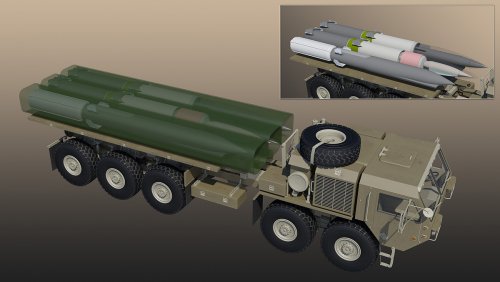
bring_it_on
I really should change my personal text
- Joined
- 4 July 2013
- Messages
- 3,640
- Reaction score
- 3,758
Walker: Hypersonic HAWC and TBG Neck-And-Neck to Fly by End of Year
Two hypersonic missile development projects jointly underway between the Air Force and the Defense Advanced Research Projects Agency are in a “race” to see which will fly first, but DARPA’s director said he expects it will happen by the end of this year, or early next.
Steven Walker, at a press roundtable in Washington, said he’s “hopeful” the Tactical Boost Glide or Hypersonic Air-breathing Weapon Concept projects will fly by December, though he said making that timetable will be “sporty.”
“As you get into the building of these things [and] qualify flight hardware, things tend to slip,” Walker allowed. “So, I’m hopeful that we can fly both of those by the end of ’19 [but] it may slip into the early ’20 timeframe.”
He said, “It’s really a race between HAWC and TBG to see which one goes first. They’re actually both scheduled around the same time … I can’t really see right now which one’s going to win out.”
Both approaches are accelerated to hypersonic speed atop a booster stage, but the TBG is a maneuvering coast vehicle that gradually bleeds off its velocity, while the HAWC takes in air to mix with fuel for a powered trajectory. They are both “focused on tactical and theater-level operations,” Walker noted.
Taking two different approaches to a hypersonic weapon is sensible, Walker asserted. “It’s good to have what I consider intended redundancy, because it’s a harder technology. Materials and propulsion systems that last in 3,000 degrees Fahrenheit temperatures is not easy.” He added, “These are going to be important tests for DARPA and the Air Force.”
The Advanced Rapid Response Weapon, or ARRW, will be an outgrowth of the TBG, Walker noted, suggesting it’s considered the most likely to be in service first. Prototyping activities on the concept with the Air Force are designed “so that the service could accept these concepts if they were successful in flight.” Under ARRW, USAF would be “taking that TBG concept and flying it several more times through the prototyping level, building some number for the Air Force.” This was “a very important thing we were able to do last year in the budget.”
Walker noted that Pentagon research and engineering czar Mike Griffin “has been able to get a lot more money into the service budgets for hypersonics for ’20,” and “you will see in the next several years the US aggressively pursuing these technologies; and not just pursuing, … but really thinking about how to turn it into a capability.”
Both projects are entering the “assembly, integration, and test phase,” Walker noted, a period when it’s not uncommon to have to “requalify things … [You] put all that together and you test the whole system, you hope it all works and has been done correctly. We’re still very much in the early stages of AIT for both programs.” He also cautioned that scheduling range tests and ensuring they’re done “by the book” can complicate or cause delays to testing. “Once you get into test hardware, there are all sorts of things you have to face down every day and beat back,” he added.
Technologically, tough challenges include managing temperatures and materials to withstand them, Walker said.
DARPA is also working with the Army on a variant of TBG that would be lofted to altitude and speed by an all-new booster. The project, called “Op Fires,” is a 50-50 cost sharing program with the Army. The booster is being eyed “to give some controllability to where that front end can be put. Re-entry conditions for a glider are very important for how far it can go, and what the environment it sees is.” Three “small companies” are working on the booster, he said.
For the Air Force versions, Walker said the B-52 will be the test launch vehicle.The Navy, meanwhile, is considering whether the HAWC approach could be a solution to its needs, though it hasn’t finished studying the issue and has made no decision, Walker reported.
“I do know the Navy is working on the larger OSD program, but that’s not really a DARPA thing,” he added.
Hypersonics is an urgent technology push, Walker insisted, because although the US has “led the way” in research previously, “some of our peer competitors have taken that technology and turned it into a capability faster than we have.” It’s “an area that I believe the US really needs to make progress in and be a leader in.”
marauder2048
"I should really just relax"
- Joined
- 19 November 2013
- Messages
- 3,157
- Reaction score
- 926
Aerojet said (in their 2018 Annual Report) that they are the propulsion stack for HCSW which they imply is not an air-breather; I had seen conflicting accounts.
In the advanced programs business arena, we initiated a full-scale engineering development of the advanced air-launched (“AAL”)
propulsion system that will transition to production. In the hypersonic propulsion technology area, we were 2 competitively selected
for multiple key missile propulsion development programs including: Hypersonic Conventional Strike Weapon (“HCSW”) with
Lockheed Martin and Operational Fires (“OpFires”) with the U.S. Defense Advanced Research Projects Agency (“DARPA”).
Both of these systems use conventional solid rocket motors to achieve hypersonic missile velocities.
Our work on complementary air-breathing propulsion (ramjet / scramjet) for hypersonic missile continued in 2018
with significant hardware testing and maturation
bring_it_on
I really should change my personal text
- Joined
- 4 July 2013
- Messages
- 3,640
- Reaction score
- 3,758
My understanding is that HCSW is the USAF AL BGW that utilizes the common swerve derived glide body , while the ARRW is more of a DARPA TBG offshoot utilizing the boost glide body developed for that program.
- Joined
- 4 July 2010
- Messages
- 2,512
- Reaction score
- 3,088
Lockheed Martin unveils potential maritime follow-on version of DARPA’s Hypersonic Air-breathing Weapon Concept at #SAS2019 today. Externally mounted to F-35C.
- Joined
- 31 December 2006
- Messages
- 802
- Reaction score
- 363
That's an air-breather? Where's the intake?
Might be covered or shrouded in the boost phase. Also it's a teeny picture, so maybe it's just not obvious.
litzj
BLOG : http://jaesan-aero.blogspot.com/
Stealth still needs silver-bullet for advanced air-defense system.
marauder2048
"I should really just relax"
- Joined
- 19 November 2013
- Messages
- 3,157
- Reaction score
- 926
A Northrop Grumman shroud on a Lockheed/Aerojet weapon?
- Joined
- 3 June 2011
- Messages
- 18,308
- Reaction score
- 12,141
"HONOLULU --- The first joint flight test of a future hypersonic weapon will take place next year, followed by tests every six months until the weapon is fielded by fiscal year 2023, the chief of Army's hypersonic program said last week.
Under the joint venture, the Army is responsible for producing the weapon's common glide body, which will also be used by the Air Force and Navy."
Under the joint venture, the Army is responsible for producing the weapon's common glide body, which will also be used by the Air Force and Navy."
- Joined
- 3 June 2011
- Messages
- 18,308
- Reaction score
- 12,141
The 1950s just called. They want credit where credit is due.
Your reference is too obscure for me. Could you elaborate?
John Becker from nasa.gov
Becker's most important contribution to aeronautics was the first U.S. development and application of hypersonic technology. When the Allies captured the German V-2 rocket-test facilities at Peenemunde at the end of World War II, they discovered, to their surprise, a wind tunnel that could attain Mach 5 on an intermittent basis. In addition, a continuous-flow tunnel capable of Mach 10 was under construction, for the purpose of testing German intercontinental ballistic missiles destined for bombardment of the United States. At the time, Becker was an Assistant Chief of the Compressibility Research Division. Spurred on by this startling news, Becker conceived the design and provided technical supervision for the Langley 11-Inch Hypersonic Tunnel, which became the workhorse for U.S. hypersonic studies. Proposed as a pilot facility for hypersonic testing, the tunnel was first operational in 1947, in the building previously occupied by the Langley Propeller Research Tunnel.
Becker's most important contribution to aeronautics was the first U.S. development and application of hypersonic technology. When the Allies captured the German V-2 rocket-test facilities at Peenemunde at the end of World War II, they discovered, to their surprise, a wind tunnel that could attain Mach 5 on an intermittent basis. In addition, a continuous-flow tunnel capable of Mach 10 was under construction, for the purpose of testing German intercontinental ballistic missiles destined for bombardment of the United States. At the time, Becker was an Assistant Chief of the Compressibility Research Division. Spurred on by this startling news, Becker conceived the design and provided technical supervision for the Langley 11-Inch Hypersonic Tunnel, which became the workhorse for U.S. hypersonic studies. Proposed as a pilot facility for hypersonic testing, the tunnel was first operational in 1947, in the building previously occupied by the Langley Propeller Research Tunnel.
- Joined
- 3 June 2011
- Messages
- 18,308
- Reaction score
- 12,141
John Becker from nasa.gov
Becker's most important contribution to aeronautics was the first U.S. development and application of hypersonic technology. When the Allies captured the German V-2 rocket-test facilities at Peenemunde at the end of World War II, they discovered, to their surprise, a wind tunnel that could attain Mach 5 on an intermittent basis. In addition, a continuous-flow tunnel capable of Mach 10 was under construction, for the purpose of testing German intercontinental ballistic missiles destined for bombardment of the United States. At the time, Becker was an Assistant Chief of the Compressibility Research Division. Spurred on by this startling news, Becker conceived the design and provided technical supervision for the Langley 11-Inch Hypersonic Tunnel, which became the workhorse for U.S. hypersonic studies. Proposed as a pilot facility for hypersonic testing, the tunnel was first operational in 1947, in the building previously occupied by the Langley Propeller Research Tunnel.
Okay. . .and? Do we need to credit China as well since they invented the gunpowder rocket? What about Grog circa 100,000 b.c. who developed the first missile when he chucked a rock at a squirrel?
Similar threads
-
Lockheed Martin AGM-183 Air-Launched Rapid Response Weapon (ARRW)
- Started by Moose
- Replies: 667
-
-
China DF-17 hypersonic boost-glide missile carrier
- Started by antigravite
- Replies: 41
-
-

